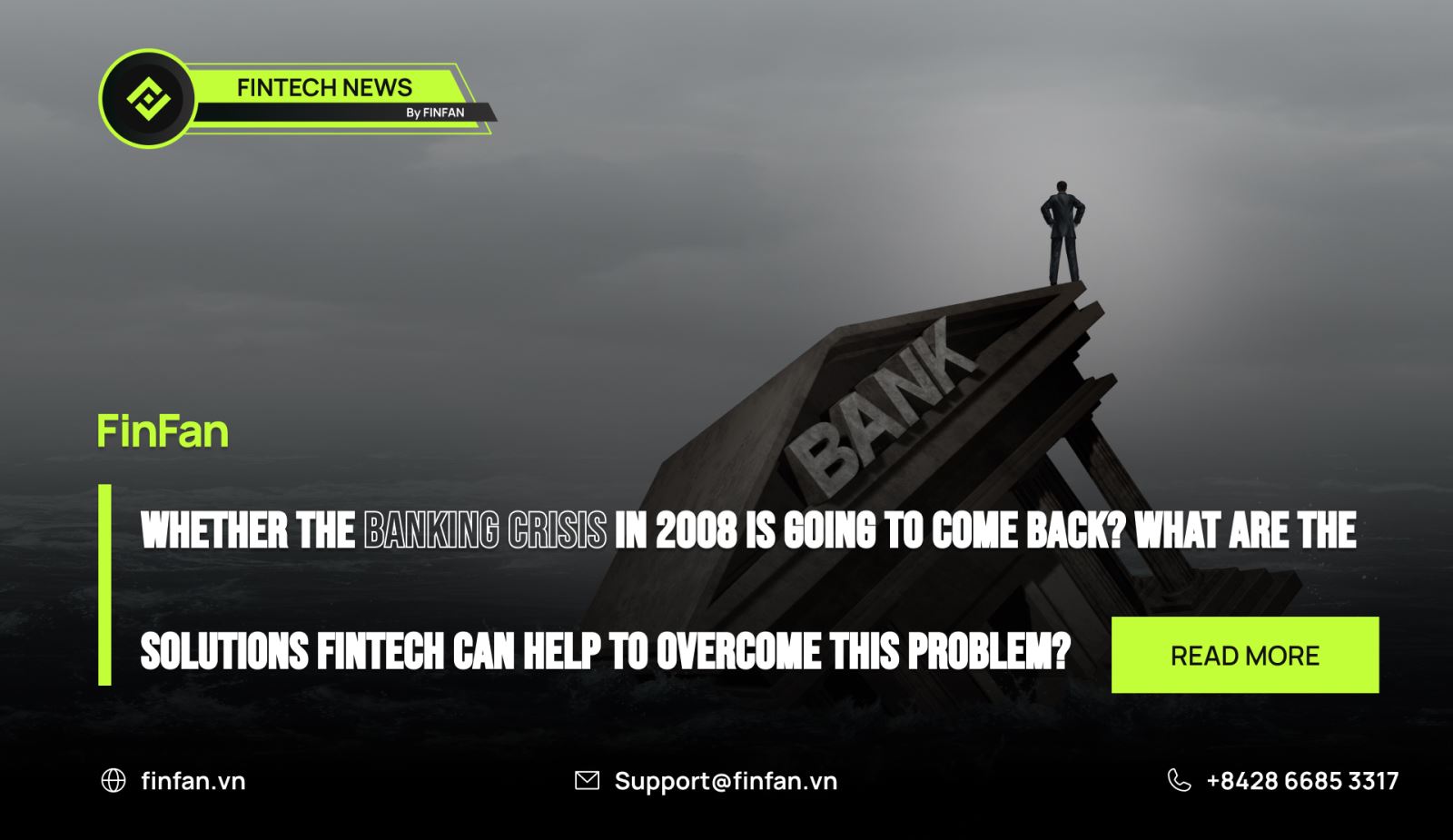Whether the banking crisis in 2008 is going to come back? What are the solutions fintech can help to overcome this problem?

On 10th March the news spread out and worldwide was shocked when we heard that the biggest bank for start-ups Silicon Valley Bank collapsed.
That could damage not only the start-up community in the U.S. but also take a big effect on the European Banking system.
So, whether the banking crisis in 2008 going to come back and what are the solutions fintech can help to overcome this problem? Let’s find out with FinFan in this article.
Whether the banking crisis in 2008 is going to come back?
According to the latest news of CNN Business:
*Europe’s banking stocks tumbled Friday as investors acted on their lingering worries that the recent crises at some banks could spill over into the wider sector.
Europe’s Stoxx Europe 600 Banks index, which tracks 42 big EU and UK banks, closed 3.8% lower. The index is down 18% from its high in late February. London’s bank-heavy FTSE 100 index closed down 1.3%.
Shares in Germany’s biggest bank, Deutsche Bank (DB), plunged as much as 14.5% before paring its losses to close 8.5% lower. Shares in UBS (UBS) and Credit Suisse (CS) were 3.6% and 5.2% down respectively.
The cost of insuring against a possible default by Deutsche Bank on its debt has soared in recent days. Deutsche’s five-year credit default swaps (CDS) skyrocketed to 203 basis points Thursday, according to data from S&P Market Intelligence. That’s their highest level since early 2019.
The swaps rose again Friday to trade at 208 basis points at midday ET. *
*Sourced by CNN Business
That could be the signal for crisis coming back when this situation is very similar to whatever happened in 2008.
Firstly, it was the bankruptcy of an investment bank in the U.S. Lehman Brothers, when this bank had offered risky mortgage loans to support real estate buyers, especially targeting low-income customers with very high lending risk, then those buyers couldn’t pay for their loans anymore when the real estate bubble was burst.
Secondly, the chain crisis happened and spread to European banks when they had had many investments in the U.S. stock market, especially banks and real estate before.
Finally, the crisis spread to the other sides of the world when the amount of money invested in developing countries stagnated, and follow that was the real estate bubble in these markets was token similarly affected such as the economic crisis in Vietnam in 2009.
However, with the experience from 2008 and the development of technology today, especially in fintech we can solve this problem easier.
How can fintech help to overcome this problem?
Firstly, how fintech can help developed countries overcome this crisis?
- The developed countries didn’t recognize the important impacts of small and medium businesses
The crisis of 2008 happened when the amount of cash poured into big banks was huge. That led to the bad controlling assets of those banks when they had invested over costly before the real estate bubble burst (2000-2006).
In addition, the most reason that led to the crisis occurred when the traditional bank couldn’t have the loans to help the small and medium businesses and focused only on the biggest companies, which made them depend too much on those. When they were bankrupted, the traditional banks suffered the same fate.
Meanwhile, small and medium businesses give motivation for an economic boost through a crisis because of their innovation for the future. In general, the 2008 financial crisis hit small businesses harder than large firms. Some of the ways the 2008 financial crisis affected small businesses were: fewer businesses were started; many businesses laid off employees or closed outright, and commercial lending drastically decreased.
- Can NEOBank be the solution?
Back to the current situation, when the technology of banking is growing fastly, NEOBank has appeared to give users a faster and cheaper way to transfer with others.
Moreover, NEOBanks cater to retail customers, and small and medium businesses, which are generally underserved by traditional banks. They leverage the mobile-first model to differentiate themselves by introducing innovative products and providing superior customer service.
Secondly, how fintech can help developing countries overcome this crisis?
- How have governments of developing countries handled crises?
Back in 2008 when the technology in developing countries was still not developed. When governments of those nations want to push up the economy, they had to print lots of cash to the market. That led the price of daily necessities to grow and inflation appeared.
After that for decreasing inflation, the governments had to increase the interest rate of banks for reducing the amount of cash circulating in the market.
This cycle kept repeating and it took no small impact on the economy, for example, from the recent economic crisis in Vietnam after COVID-19 in 2022 to now, when many big real estate companies in Vietnam have been bankrupted due to bonds and banks’ debt.
- Cashless purchasing is the best solution to this problem.
For reducing the cash circulating in the market, many technology companies, especially fintech companies have appeared and grown to give users cashless payment ways. One of those solutions is an e-wallet.
In recent years in Vietnam, many e-wallets have been built and become unicorns such as MoMo, Zalo Pay and VNPay